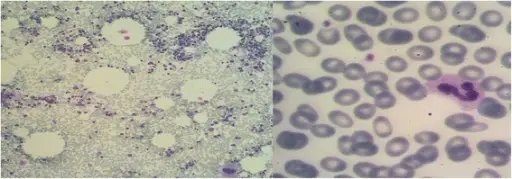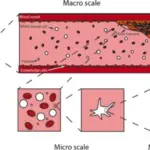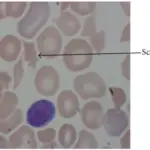Immune thrombocytopenic purpura is an acquired autoimmune bleeding disorder characterized by isolated thrombocytopenia (peripheral blood platelet count < 100 × 109/L).
What is the Pathology of Immune Thrombocytopenic Purpura?
The pathology of immune thrombocytopenic purpura is:
-Etiology: The cause of immune thrombocytopenic purpura is autoantibodies against platelet antigens. It may be triggered by drugs, infections, or lymphomas, or may be idiopathic.
-Genes involved: None.
-Pathogenesis: The sequence of events that lead to immune thrombocytopenic purpura shows impairment in CD4+ T regulatory cells and dendritic cells leads to the initiation and perpetuation of ITP. Thrombocytopenia due to IgG antiplatelet autoantibodies (principal mechanism) bind to platelet surface antigens such as glycoprotein.
-Histology: The histology associated with immune thrombocytopenic purpura shows splenic white pulp is prominent, with focal germinal centers and hyperplastic marginal zones.
How does Immune Thrombocytopenic Purpura Present?
Patients with immune thrombocytopenic purpura typically affect women present at the age range of 20-40 years. The symptoms, features, and clinical findings associated with immune thrombocytopenic purpura include petechiae, easy bruising, epistaxis, gum bleeding, and hemorrhages after minor trauma. Fortunately, more serious intracerebral or subarachnoid hemorrhages are uncommon.
How is Immune Thrombocytopenic Purpura Diagnosed?
Immune thrombocytopenic purpura is diagnosed based on the clinical features, the presence of thrombocytopenia, examination of the marrow, and the exclusion of secondary ITP. Reliable clinical tests for antiplatelet antibodies are not available.
How is Immune Thrombocytopenic Purpura Treated?
Immune thrombocytopenic purpura is treated with corticosteroids, intravenous immunoglobulin, and anti-D immunoglobulin.
What is the Prognosis of Immune Thrombocytopenic Purpura?
The prognosis of immune thrombocytopenic purpura is good with platelet count returning to normal within 6 to 12 months.



